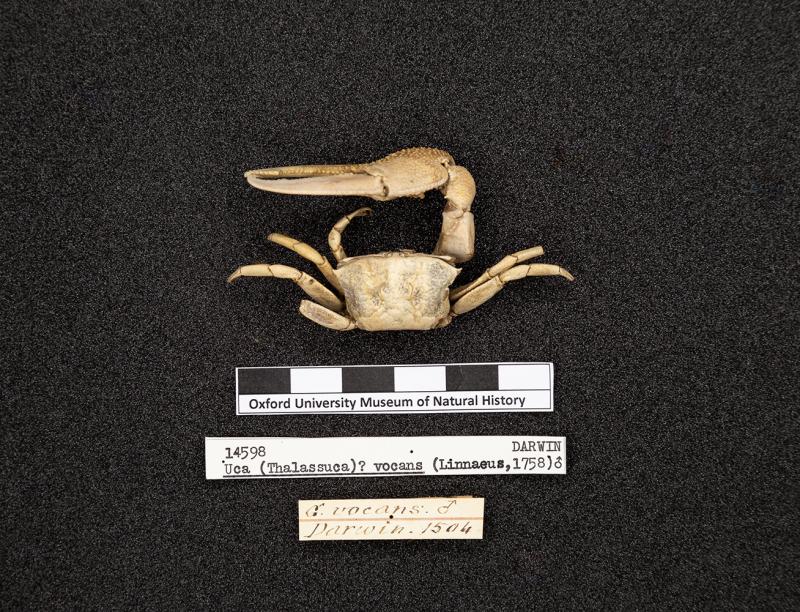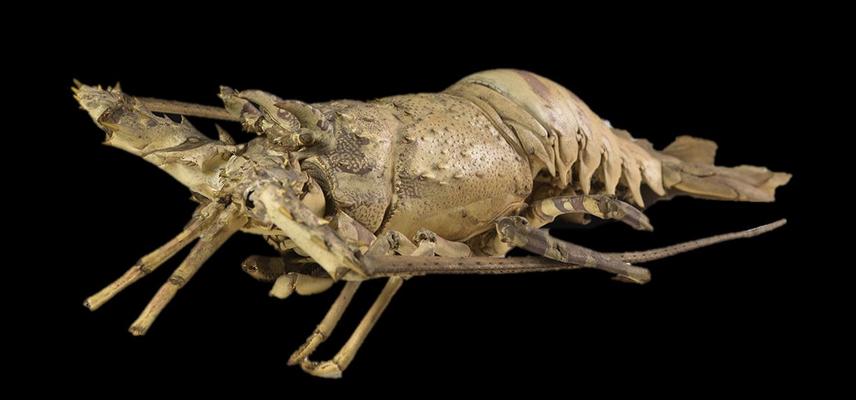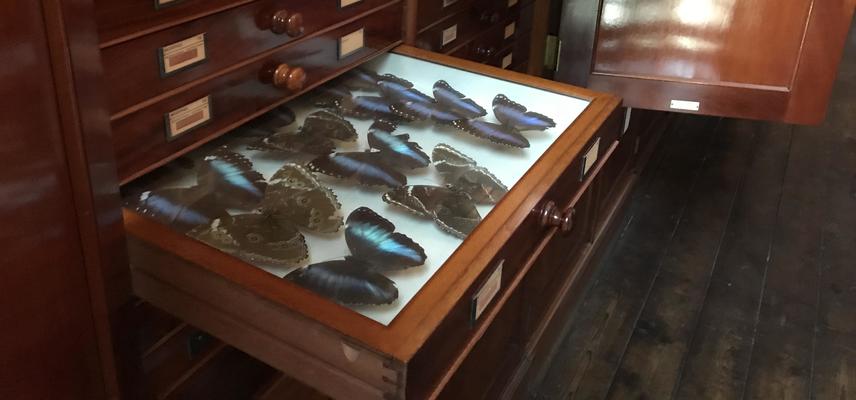Crustaceans
The Museum collections are particularly strong in crustaceans, going back to the founding collections, with F W Hope's (1851) collections from the Mediterranean.

A male fiddler crab (Uca vocans) collected by Charles Darwin.
Other notable historic collections include material collected by Charles Darwin on the Voyage of the Beagle, and the collection of T Bell. Bell not only published on the Beagle collections, but also produced a seminal work on British Decapoda in 1844–1853, many of which are in the collection. The collection currently contains around 17,600 specimens.
In recent years, the expansion of the collection has focussed on caridean shrimps, through fieldwork in the Caribbean and other tropical locations, donated material from across the globe, and exchange programmes with other leading collections. As a result, the collection contains approximately 40% of total global biodiversity of this group, including type material for numerous species, standing at around 10,000 specimens.
The collections also contain numerous specimens (dry and fluid-preserved) historically used for teaching purposes, from across all crustacean groups, ranging from parasitic copepods through to a giant spider crab.
WANT TO VIEW OUR SPECIMENS?
View our crustacean collections online
Book a Special Interest Visit







